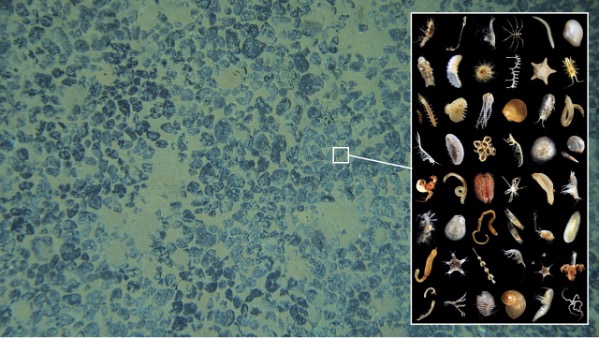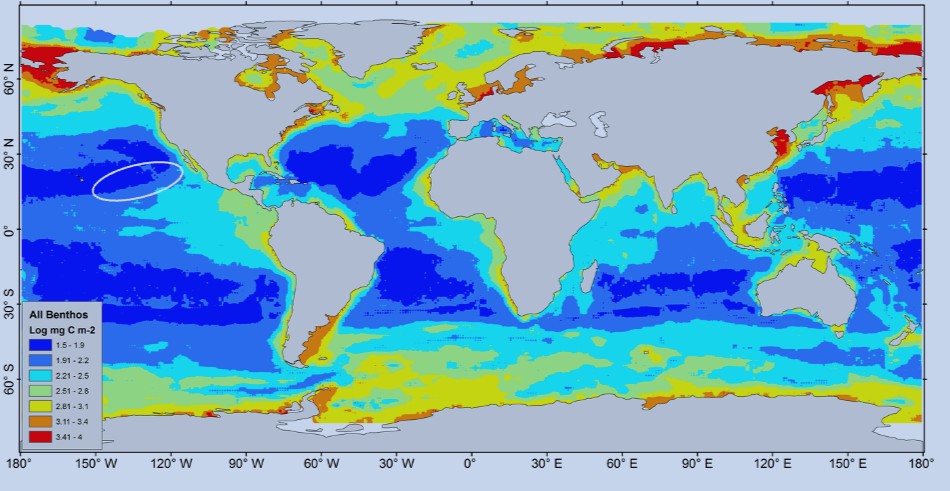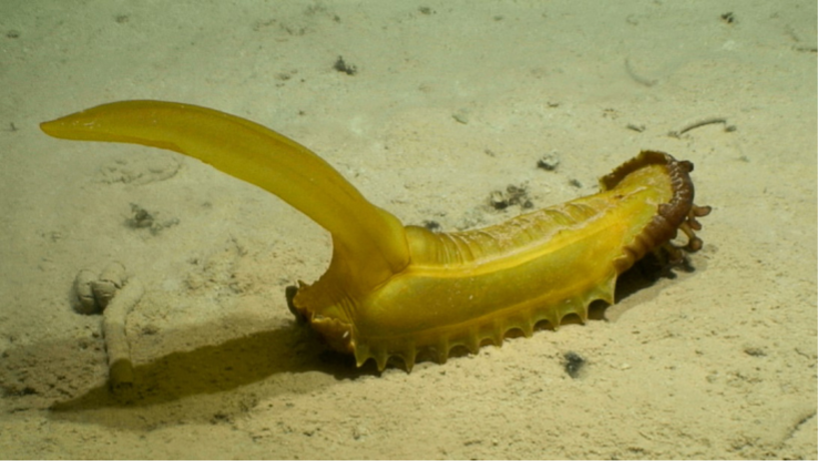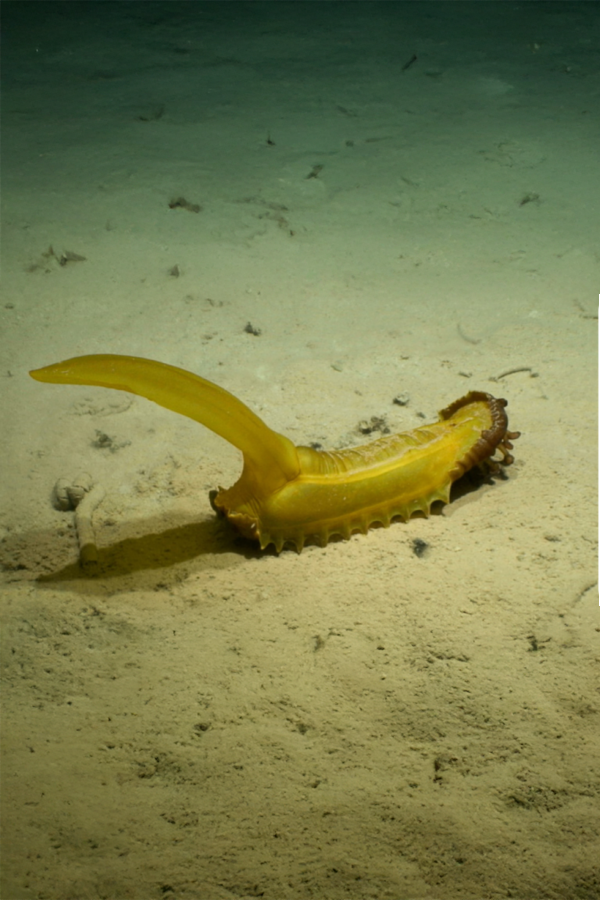Polymetallic nodules are found on the abyssal plains that lie beneath some of the deepest parts of the ocean and are typically located at water depths of 4,000 to 6,000 meters (13,000 to 20,000 feet). These regions are vast, generally flat or undulating parts of the seafloor that are covered in fine sediment.
In large areas of the abyssal plains, dark, potato-sized polymetallic nodules composed of metals such as nickel, cobalt, manganese, and copper are found resting on this sediment.
When you look at images of the ultra-deep seafloor where polymetallic nodules are found signs of life aren’t easy to see.
To survive at these depths, life has adapted to, or is at least somewhat tolerant of, conditions such as:
- High pressure of 400 to 600 atmospheres.
- Cold and dark with temperatures near freezing (~1-4°C / 34-39°F) and no natural light.
- Poor food supply because, by the time the nutrients fall through the upper ocean layers to the abyssal plains, there is very little left, resulting in slow growth rates.

Most life in the CCZ lives in the sediment and is small (less than a centimeter) in size.
Most of what lives on the abyssal plains is very small in size (less than a centimeter) and resides in the sediment. This includes bacteria and small invertebrates such as worms (e.g., polychaetes, nematodes) and crustaceans (amphipods, isopods, and shrimp-like species). While biodiversity is high, due to the small size of what lives there, the biomass found in polymetallic nodule fields is low. In other words, there may be many different species present, but the total amount of living matter is relatively small.

Most sea life is concentrated near the poles, along continental edges, and in nutrient-rich upwelling zones. In contrast, the abyssal plains of the deep ocean are much emptier, with only small organisms surviving as food becomes scarcer with depth. The approximate location of the CCZ is shown with the white-outlined oval.
Larger organisms, called megafauna (1 centimeter in size and bigger) can also be observed, although they are less abundant and less diverse. Sea cucumbers (Holothurians) can sometimes be seen traversing the seafloor. Small sponges and brittle stars can also be found on the seafloor, while rattails and cusk eels can be seen swimming above it on occasion.

Holothurian “Psychropotes longicauda” at 5,100 meters depth on abyssal sediments in the western Clarion Clipperton Zone (Image: DeepCCZ expedition)
Some studies have shown polymetallic nodules themselves can host small organisms which live on the surface and in crevices. Some sponges, anemones and barnacles have been found attached to polymetallic nodules in the Clarion Clipperton Zone.
Meanwhile, nodules found in the Cook Islands Exclusive Economic Zone are typically rounder and smoother than those found in the CCZ, which could mean there isn’t as much biota residing on or in them.
Studies to find out more are ongoing.

